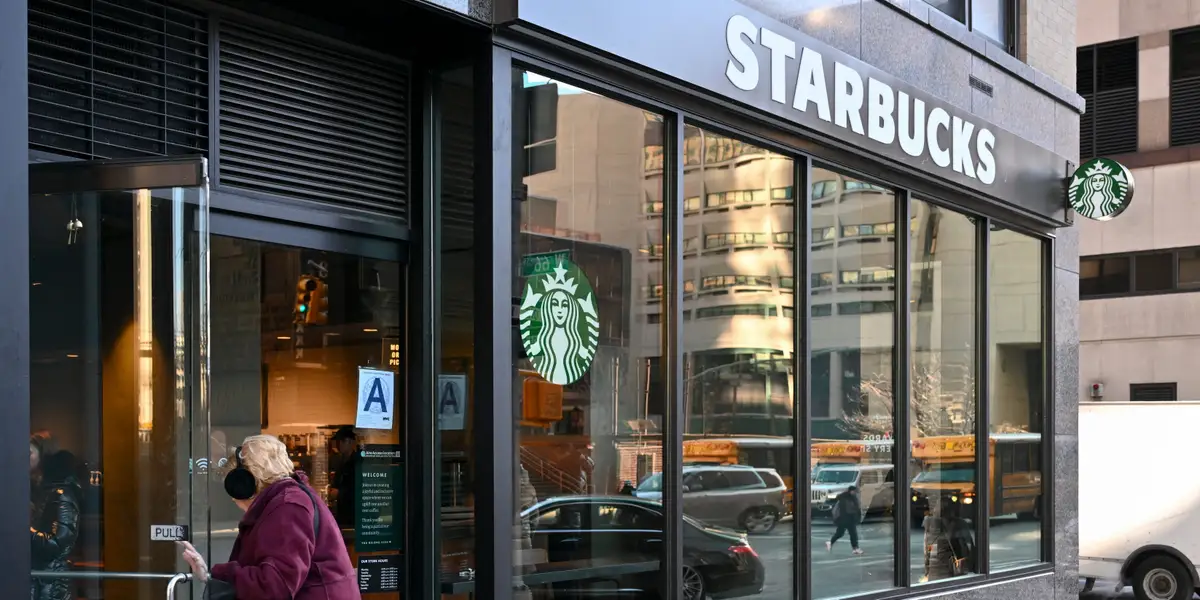
Adidas said in January that it would reduce the size of its workforce at its headquarters in Herzogenaurach, Germany, affecting up to 500 jobs, CNBC reported.
If fully executed, it amounts to a reduction of nearly 9% at the company headquarters, which employs about 5,800 employees, according to the Adidas website.
The news came shortly after the company announced it had outperformed its profit expectations at the end of 2024, touting “better-than-expected” results in the fourth quarter.
An Adidas spokesperson said the company had grown “too complex because of our current operating model.”
“To set adidas up for long-term success, we are now starting to look at how we align our operating model with the reality of how we work. This may have an impact on the organizational structure and number of roles based at our HQ in Herzogenaurach.”
The company said it is not a cost-cutting measure and could not confirm concrete numbers.
The digital-financial-services company Ally is laying off roughly 500 of its 11,000 employees, a spokesperson confirmed to BI.
“As we continue to right-size our company, we made the difficult decision to selectively reduce our workforce in some areas, while continuing to hire in our other areas of our business,” the spokesperson said.
The spokesperson also said the company was offering severance, outplacement support, and the opportunity to apply for openings at Ally.
Ally made a similar level of cuts in October 2023, the Charlotte Observer reported.
Automattic, the parent company of Tumblr and WordPress, said in April it is cutting 16% of its staff globally. The company’s website said it has nearly 1,500 employees.
Automattic’s CEO, Matt Mullenweg, said in a note to employees posted online that the company has reached an “important crossroads.”
“While our revenue continues to grow, Automattic operates in a highly competitive market, and technology is evolving at unprecedented levels,” the note read.
The company is restructuring to improve its “productivity, profitability, and capacity to invest,” it added.
The company said it was offering severance and job placement resources to affected employees.
Jack Dorsey’s fintech company, Block, is laying off nearly 1,000 employees, according to TechCrunch and The Guardian, in its second major workforce reduction in just over a year.
The company, which operates Square, Afterpay, CashApp, and Tidal, is transitioning nearly 200 managers into non-management roles and closing almost 800 open positions, according to an email obtained by TechCrunch.
Dorsey, who co-founded Block in 2009 after previously leading Twitter, announced the layoffs in March in an internal email titled “smaller block.”
The restructuring is part of a broader effort to streamline operations, though Block maintains the changes are not driven by financial targets or AI replacements.
Jeff Bezos’s rocket company, Blue Origin, is laying off about 10% of its workforce, a move that could affect more than 1,000 employees.
In a memo sent to staff in February and obtained by Business Insider, David Limp, the CEO of Blue Origin, said the company’s priority going forward was “to scale our manufacturing output and launch cadence with speed, decisiveness and efficiency for our customers.”
Limp specifically identified roles in engineering, research and development, and management as targets.
“We grew and hired incredibly fast in the last few years, and with that growth came more bureaucracy and less focus than we needed,” Limp wrote. “It also became clear that the makeup of our organization must change to ensure our roles are best aligned with executing these priorities.”
The news comes after January’s debut launch of the company’s partially reusable rocket — New Glenn.
Boeing announced on February 8 that it plans to cut 400 roles from its moon rocket program amid delays and rising costs related to NASA’s Artemis moon exploration missions.
Artemis 2, a crewed flight to orbit the moon on Boeing’s space launch system, has been rescheduled from late 2024 to September 2025. Artemis 3, intended to be the first astronaut moon landing in the program, was delayed from late 2025 and is now planned for September 2026.
“To align with revisions to the Artemis program and cost expectations, we informed our Space Launch Systems team of the potential for approximately 400 fewer positions by April 2025,” a Boeing spokesperson told Business Insider. “We are working with our customer and seeking opportunities to redeploy employees across our company to minimize job losses and retain our talented teammates.”
The company will issue 60-day notices of involuntary layoff to impacted employees “in coming weeks,” the spokesperson said.
Boeing cut 10% of its workforce last year.
Oil giant Chevron plans to cull 15% to 20% of its global workforce by the end of 2026, the company said in a statement to Business Insider in February.
Chevron employed 45,600 people as of December 2023, which means the layoff could cut 9,000 jobs.
The move aims to reduce costs and simplify the company’s business as it completes its acquisition of oil producer Hess, which is held up in legal limbo. It is expected to save the company $2 billion to $3 billion by the end of 2026, the company said.
“Chevron is taking action to simplify our organizational structure, execute faster and more effectively, and position the company for stronger long-term competitiveness,” a Chevron spokesperson said in a statement.
The cuts follow a series of layoffs at other oil and gas companies, including BP and natural gas producer EQT.
The third-largest oil producer in the US, ConocoPhillips plans to cut 20-25% of its global workforce as part of a broad restructuring, a company spokesperson said in an emailed statement to Reuters on September 3.
The company employed about 11,800 people at the end of 2024, per a regulatory filing, which means up to 2,950 jobs could be cut.
ConocoPhillips’ stock fell 4.4% on Wednesday.
Other oil giants, including Chevron and BP, have also slashed headcount this year because of falling oil prices.
Disney confirmed to BI on June 2 that it was laying off several hundred employees globally.
Most of the cuts were to roles in marketing for films and TV under the Disney Entertainment division. Other roles affected included employees in publicity, casting, and development, as well as corporate finance.
In March, the company also cut around 200 people from its ABC News Group and Disney Entertainment Networks. In 2024, the company also had several rounds of layoffs.
Shortly after Bob Iger returned to the company as CEO in 2022, he said 7,000 jobs at Disney would be cut as part of a reorganization.
Micha Kaufman, the CEO and founder of the freelancing platform Fiverr, said on September 15 that the company was cutting about 30% of its workforce.
Kaufman said in a letter to employees that the cuts would affect around 250 team members across different departments. Fiverr had 762 full-time employees as of 2024, per its SEC filing in February.
He added that the cuts were needed to help turn Fiverr into a leaner and faster “AI-first company.”
Kaufman said in a staff memo in April that AI was “coming for your jobs” and was a “wake-up call.” In May, he told Business Insider that Fiverr would only hire people who know how to use AI.
“If you don’t ensure that you sharpen your knives, you’re going to be left behind. It’s that simple,” Kaufman said.
Hewlett Packard Enterprise is cutting 2,500 jobs, or 5% of its employee base, CEO Antonio Neri said on an earnings call on March 6. The cuts are expected take to take place over the next 12 to 18 months.
“Doing so will better align our cost structure to our business mix and long-term strategy,” Neri said. The company expects to save $350 million by 2027 because of the reduction.
HPE plummeted about 20% after hours on March 6 after it said business would be affected by recent tariffs, slow server and cloud sales, and “execution issues.”
Chipmaker Intel is laying off more than 5,000 employees across four US states, according to a July 16 government filing.
Most of the cuts are happening in California and Oregon, while others are in Texas and Arizona, per updated Worker Adjustment and Retraining Notification, or WARN, filings.
Intel began laying off employees in July as part of planned job cuts, the company said in a regulatory filing.
The company told staff on June 14 to expect 15% to 20% of employees in its Foundry division to be laid off this summer, according to a memo reported by The Oregonian. Intel confirmed the authenticity of the memo to BI but declined to comment on its contents.
As of December 2024, Intel employed about 108,900 people. In its annual report, the company told investors that it would reduce its “core Intel workforce” by about 15% in early 2025.
“Removing organizational complexity and empowering our engineers will enable us to better serve the needs of our customers and strengthen our execution,” an Intel spokesperson told BI.
Johns Hopkins University will cut over 2,000 jobs after losing $800 million in funding from USAID.
“This is a difficult day for our entire community,” a spokesperson told BI. “The termination of more than $800 million in USAID funding is now forcing us to wind down critical work here in Baltimore and internationally.”
The news comes after the Trump administration slashed USAID personnel down from over 10,000 to around 300. Secretary of State Marco Rubio recently confirmed that 83% of the agency’s programs are now dead.
“We can confirm that the elimination of foreign aid funding has led to the loss of 1,975 positions in 44 countries internationally and 247 in the United States in the affected programs,” the Johns Hopkins spokesperson said. “An additional 29 international and 78 domestic employees will be furloughed with a reduced schedule.”
The layoffs at Johns Hopkins represent the “largest” in the university’s history, CNN reported. They’ll primarily affect the schools of medicine and public health, along with the Center for Communication Programs and Jhpiego, a nonprofit with a focus on preventing diseases and bolstering women’s health, according to the report.
Department store Kohl’s announced on January 28 that it reduced about 10% of its corporate roles to “increase efficiencies” and “improve profitability for the long-term health and benefit of the business,” a spokesperson told BI.
“Kohl’s reduced approximately 10 percent of the roles that report into its corporate offices,” the spokesperson said. “More than half of the total reduction will come from closing open positions while the remainder of the positions were currently held by our associates.”
Less than 200 existing employees of the company would be impacted, she added.
This follows the company’s announcement on January 9 that it would shutter 27 underperforming stores across 15 states by April.
The retailer has been struggling with declining sales, reporting an 8.8% decline in net sales in the third quarter of 2024.
Its previous CEO, Tom Kingsbury, stepped down on January 15. The company’s board appointed Ashley Buchanan, a retail veteran who had held top jobs in The Michaels Companies, Macy’s, and Walmart, as the new CEO.
Kroger Co. is cutting nearly 1,000 corporate jobs as part of a cost-trimming effort following the collapse of its proposed merger with Albertsons, a spokesperson told BI.
In an internal memo viewed by Business Insider, interim CEO Ron Sargent told employees on August 26 that “thoughtful, yet difficult, choices are necessary” for the organization to continue to succeed.
The grocer also plans to reinvest savings into lowering prices, opening new stores, and creating jobs at the store level.
The shake-up comes as Kroger navigates leadership changes after former CEO Rodney McMullen resigned earlier this year amid a board investigation into his conduct.
As of February, Kroger employed more than 409,000 people, mostly in retail roles. The layoff would not affect workers in stores, manufacturing facilities, or distribution centers.
Microsoft cut an unspecified number of jobs in January based on employees’ performance.
Workers were told that they wouldn’t receive severance and that their benefits, such as medical insurance, would stop immediately, BI reported.
The company also laid off some employees in January at divisions including gaming and sales. A Microsoft spokesperson declined to say how many jobs were cut on the affected teams.
In May, the company announced layoffs affecting about 6,000 workers.
Another round of layoffs in July will affect less than 4% of its total workforce, or roughly 9,000 employees, based on its head count of around 220,000.
Microchip Technology is cutting its head count across the company by around 2,000 employees, the semiconductor company said on March 3.
The company estimated that it would incur between $30 million and $40 million in costs, including severance, severance benefits, and other restructuring costs.
The cuts would be communicated to employees in the March quarter and fully implemented by the end of the June quarter.
Last year, Microchip announced it was closing its Tempe, Arizona, facility because of slower-than-anticipated orders. The closure begins in May 2025 and is expected to affect 500 jobs.
Microchip’s stock had fallen over 33% in the past year.
Morgan Stanley is set to initiate a round of layoffs beginning at the end of March. The firm is eyeing cuts to about 2% to 3% of its global workforce, which would equate to between 1,600 to 2,400 jobs, according to a person familiar with the matter who confirmed the reductions to BI.
The firm’s cuts are driven by several imperatives, the person said, pointing to considerations like operational efficiency, evolving business priorities, and individual employees’ performance. The person said the cuts are not related to broader market conditions, such as the recent slowdown in mergers and acquisitions that’s arrested momentum on Wall Street.
Some MS staffers will be excluded from the cuts, however — namely, the bank’s battalion of financial advisors — though some who assist them, such as administrative personnel in its wealth-management unit, could be affected by the layoffs, the person added.
Nike’s turnaround plan is in full swing. It’s reducing its corporate staff by 1% as part of its efforts, the company confirmed to Business Insider on August 28.
It’s unclear how many jobs will be affected, but CNBC reported that Nike sent employees a memo about the change in August.
“As we shared in Q4 earnings, Nike, Inc. is in the midst of a realignment,” the company said in a statement. “The moves we’re making are about setting ourselves up to win and create the next great chapter for Nike.”
Nike said in June, when it reported fiscal fourth-quarter earnings, that it would “evaluate corporate cost reduction as appropriate.”
CEO Elliott Hill also told analysts at the time that the company would realign its teams as it shifts away from a men’s, women’s, and kids’ structure.
Nike also cut jobs in 2024 amid broader cost cutting.
Danish pharmaceutical giant Novo Nordisk said in a statement on September 10 that it was cutting 9,000 jobs, or about 11%, of its workforce. It added that around 5,000 of the cuts would take place in Denmark.
Novo Nordisk’s president and CEO, Mike Doustdar, said the cuts were needed because the market for obesity drugs was becoming “more competitive and consumer-driven.” Novo Nordisk is the producer of the hit weight loss drugs, Ozempic and Wegovy.
“Our company must evolve as well. This means instilling an increased performance-based culture, deploying our resources ever more effectively, and prioritising investment where it will have the most impact — behind our leading therapy areas,” he added.
Peloton said in its August earnings report that it would cut its global headcount as part of an effort to find $100 million in run-rate cost savings by the end of the next fiscal year.
“As of today, we will have actioned about roughly half of the run rate savings through the reductions in our workforce and we expect to achieve the remainder throughout the balance of the year,” CFO Elizabeth Coddington told investors on the earnings call.
The company employed about 2,900 people last year, and approximately 6% of the workforce will be affected by the reductions, Reuters reported.
Porsche said on March 12 that it plans to cut 3,900 jobs in the coming years.
About 2,000 of the reductions will come with the expiration of fixed-term contractor positions, the German automaker said. The company will make the other 1,900 reductions by 2029 through natural attrition and limiting hiring, it said.
Porsche said it also plans to discuss more potential changes with labor leaders in the second half of the year. “This will also make Porsche even more efficient in the medium and long term,” the company said.
On July 16, Scale AI laid off about 200 full-time employees and 500 contractors, according to the company.
The 200 full-time cuts make up 14% of the data labeling startup’s 1,400-person workforce.
The company is restructuring its generative AI group, according to an email from Scale’s interim CEO, Jason Droege, obtained by Business Insider.
The cuts follow Meta’s $14 billion investment in Scale AI in June as part of a blockbuster deal. The deal included the hiring of Scale’s ex-CEO, Alexandr Wang, and the purchase of equity in almost half of the startup.
Southwest Airlines CEO Bob Jordan announced in February that the company is laying off 15% of its corporate staff, or about 1,750 employees.
He said affected workers will keep their pay, benefits, and bonuses through late April, when the separations will take effect.
The company told investors the cuts would save about $210 million this year and $300 million in 2026.
The move comes as Southwest tries to cut costs amid profitability problems. Jordan said this is the first significant layoff the company has had in its 53-year history.
An activist hedge fund took a stake in Southwest in June and has since helped restructure its board and change its business model to keep up with a changing industry. For example, it plans to end its long-standing open-seating policy to generate more seating revenue.
In recent months, the company has also reduced flight crew positions in Atlanta to cut costs.
Starbucks said it would lay off 900 non-retail employees in September and close about 1% of company-operated stores in North America.
The cuts come after the company notified 1,100 corporate employees that they had been laid off in February.
CEO Brian Niccol said in a February memo that the layoffs would make Starbucks “operate more efficiently, increase accountability, reduce complexity and drive better integration.”
The company is trying to improve results after sales slid last year.
UPS announced on April 29 that it plans to cut 20,000 jobs this year — about 4% of its global workforce — as part of a shift toward automation and a strategic reduction in business with Amazon.
“With our action, we will emerge as an even stronger, more nimble UPS,” the company’s CEO, Carol Tomé, said in a statement.
The move follows a sharp 16% drop in Amazon package volume in Q4 and is part of a plan to halve its Amazon business by mid-2026. UPS will also close 73 US buildings by June and automate 400 facilities to reduce labor dependency.
The Teamsters union have said they would fight any layoffs affecting its members.
Wayfair announced in an SEC filing on March 7 that it would eliminate its Austin Technology Development Center and lay off around 340 tech workers.
The reorg comes as the technology team has accomplished “significant modernization and replatforming milestones,” the company said in the filing. Wayfair said it plans to refocus resources and streamline operations to promote its “next phase of growth.”
“With the foundation of this transformation now in place, our technology needs have shifted,” the company said.
Wayfair expects to take on $33 to $38 million in costs as a result of the reorganization, consisting of severance, cash employee-related costs, benefits, and transitional costs.
Workday, the human-resources software company, said in February that it is cutting 8.5% of its workforce, or around 1,750 employees. The layoffs came as the company focuses more on artificial intelligence.
In a note to employees, CEO Carl Eschenbach said that Workday will focus on hiring in areas related to artificial intelligence and work to expand its global presence.
“The environment we’re operating in today demands a new approach, particularly given our size and scale,” Eschenbach wrote. He said that affected employees will get at least 12 weeks of pay.



